7 Best Cable Flyes Variations (with Pictures!)
As far as chest exercises go, few are as versatile and volume-friendly as the classic cable fly.
As a result of being a machine-based exercise, there are quite a number of possible cable fly variations that one can perform.
Although the majority of these variations target much the same muscle groups - altering the grip used or the position of the cable pulley itself can also change what part of these muscles is targeted.
While more complex than it sounds, variations like the high cable fly will correspondingly target the upper chest, whereas the low cable fly will target the lower section. Likewise, performing the exercise at a decline also targets the lower chest, just as at an incline targets the opposite.
What is a Cable Flye?
Cable flys (or flyes) are a type of compound chest exercise involving the lifter drawing their arms together against the resistance of the cable.
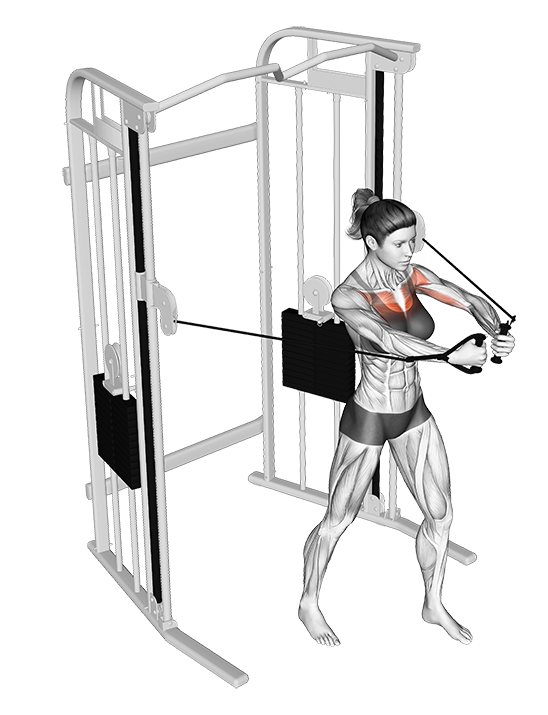
In most variations, this exercise is performed with the hands separated from one another, often with the use of single-handed cable attachments - of which are also referred to as “D” handles.
Apart from targeting the chest, the majority of cable fly variants will also include the biceps brachii, triceps brachii and the deltoids.
Of course, whether or not these muscles are targeted will depend on the specific variation being performed.
Cable Flyes Variations
1. The Conventional Cable Fly
The conventional cable fly is simply the standard variation that the majority of individuals are referring to when speaking of a “cable fly”. This particular variant involves the lifter standing in the center of the machine and setting the pulley to about shoulder height.
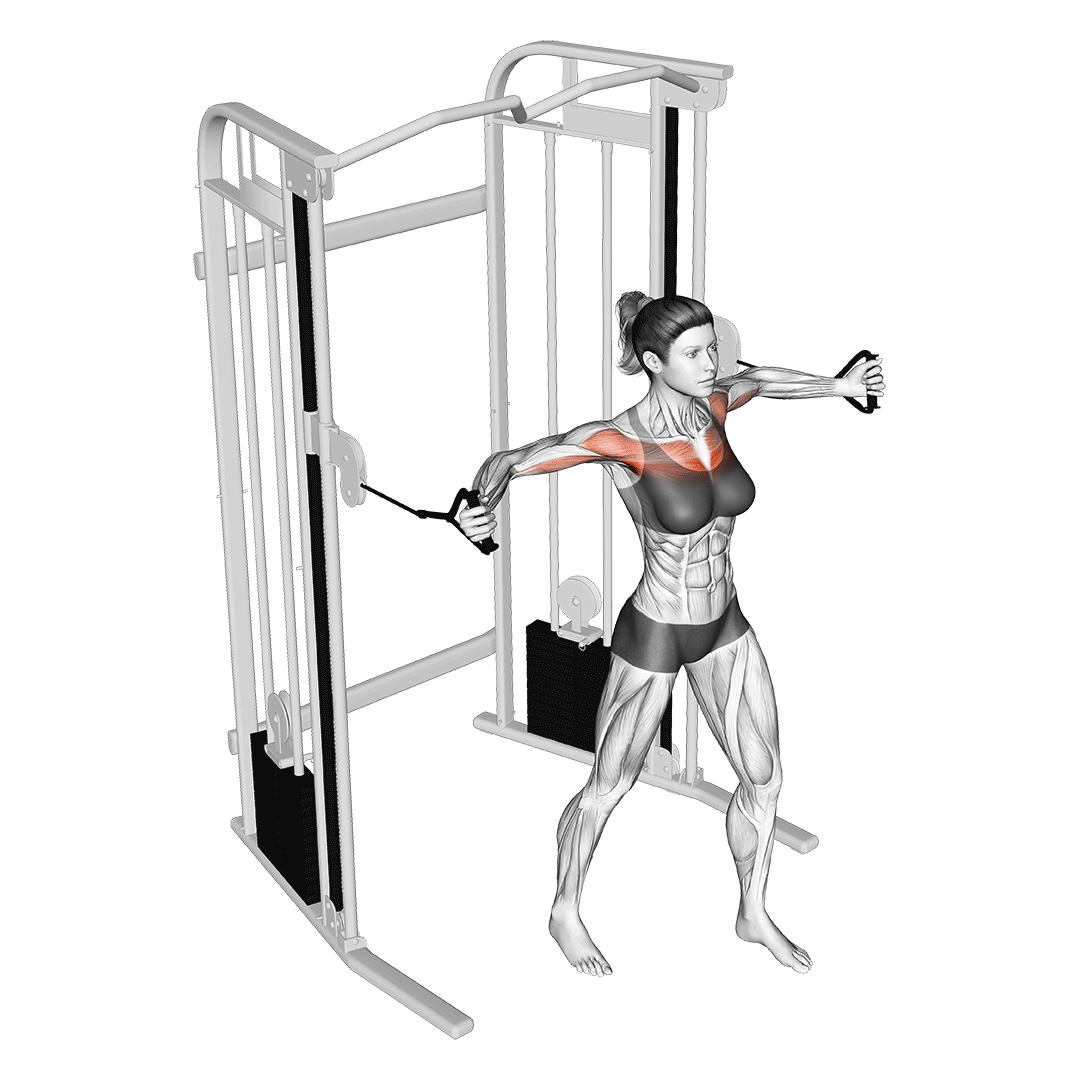
Like most other variations, the conventional cable fly is performed for moderate to high volume and a low level of resistance - the optimal programming for targeted hypertrophy.
Muscles Worked
The conventional cable fly targets the entirety of the pectoral muscle group in equal measure, as well as the anterior deltoid head and (to a lesser extent) the biceps brachii.
Benefits as a Cable Fly Variation
Being the “baseline” form of cable fly, the conventional variation is the most optimal choice for building non-specific mass and strength in the chest.
It pairs particularly well with heavy free weight exercises like the bench press or weighted dip, as it features significant potential for high volume sets.
How-to:
To perform a repetition of the regular cable fly, the lifter will set the cable pulleys at approximately shoulder-height, selecting a pair of single-hand attachments.
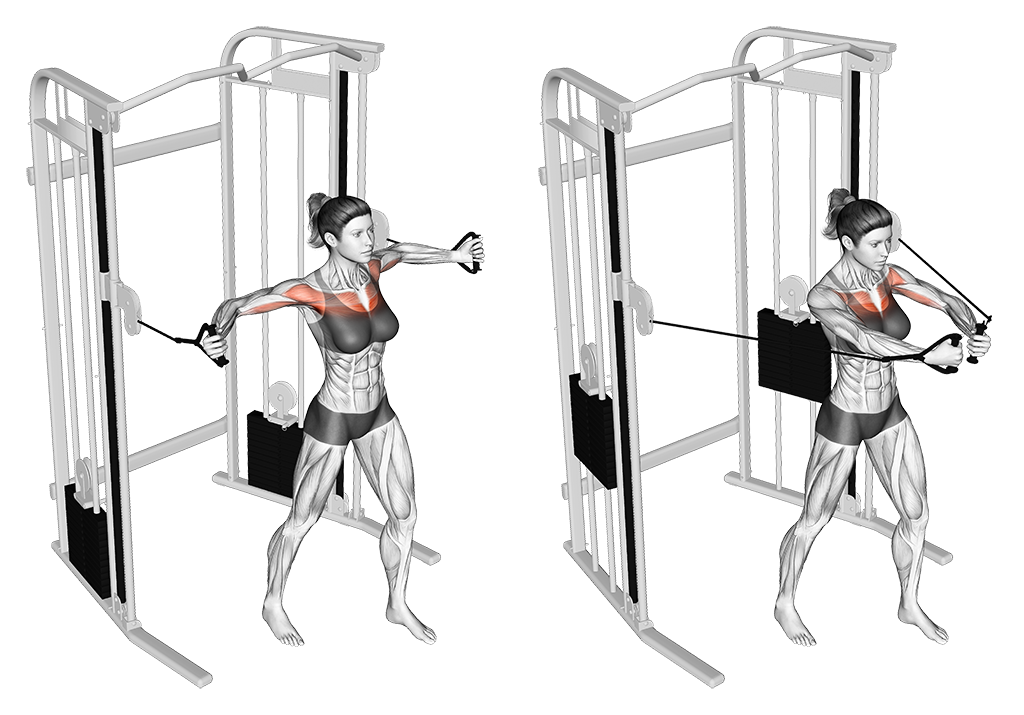
These handles should be held in a neutral grip with the palms facing one another during the mid-point of the repetition.
Standing within the center of the cable machine with the feet positioned for optimal balance, the lifter will grip both handles in each hand and their shoulders pushed back. Both arms should be raised in such a way that the upper arms are parallel to the floor, the elbows bent somewhat and the shoulders retracted.
Now in the correct stance, the lifter will squeeze their pectoral muscles and draw their hands together, keeping the slight bend in their elbows as they do so.
Once the hands are close to touching each other, the motion should be slowly reversed until the upper arms are once again parallel to the floor.
At this point, the repetition is considered to be complete.
2. The High Cable Fly
As one may be able to guess from the name - the high cable fly is a variation of the conventional cable fly with the cable pulleys set higher than shoulder-height.
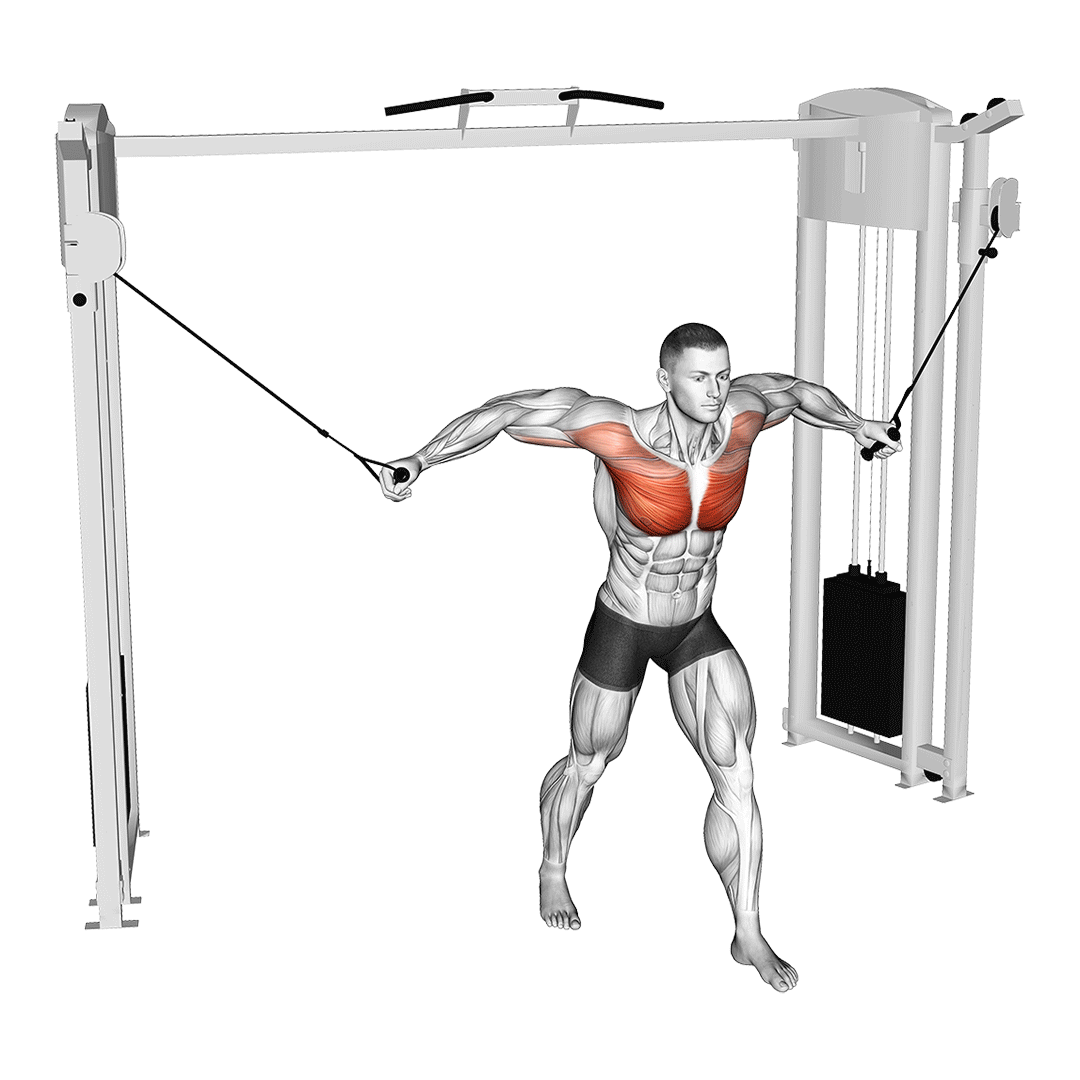
Raising the cable pulley in this manner changes the angle of resistance, creating greater emphasis on the upper section of the pectoralis major and reducing involvement of the biceps.
There is some controversy to the high cable fly for its supposedly greater risk of shoulder impingement. In order to reduce this risk, ensure that the torso is not bending forwards and the scapula remains in a safe position throughout the set.
Muscles Worked
The high cable fly emphasizes the upper section of the pectoralis major, and will also recruit the anterior deltoids and pectoralis minor.
Benefits as a Cable Fly Variation
For lifters with poor upper chest development, few exercises will meet their needs as well as the high cable fly.
Because the biceps play a lesser role during the exercise, the chest will also be forced to work more - making the high cable fly ideal for isolating the pectoral muscles.
How-to:
To perform a repetition of the high cable fly, the lifter will set the cable pulleys as high as possible, selecting the same handles as would be the case with the conventional fly.
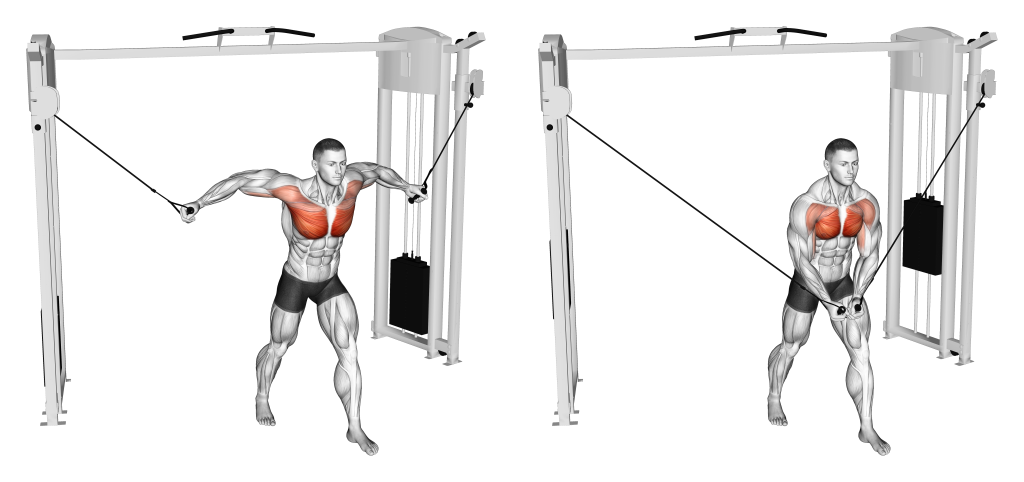
Then, gripping the handles, the lifter will assume a balanced and stable stance as they tilt the torso slightly forwards, allowing the arms to be drawn outwards by the resistance of the cables. As always, maintain a slight bend in the elbows.
With the upper arms outstretched and body positioned, the lifter will then draw their hands together, following the angle produced by the cables. The elbows should remain bent until near the end of the movement, where they may straighten somewhat.
Once the palms are nearly touching, the lifter will slowly reverse the motion and stretch their arms back out - thereby completing the repetition.
3. The Low Cable Fly
Yet another variation that alters the position of the pulleys; the low cable fly sets the pulleys as low as possible. This, once again, changes the angle of resistance and shifts emphasis towards the lower section of the chest.
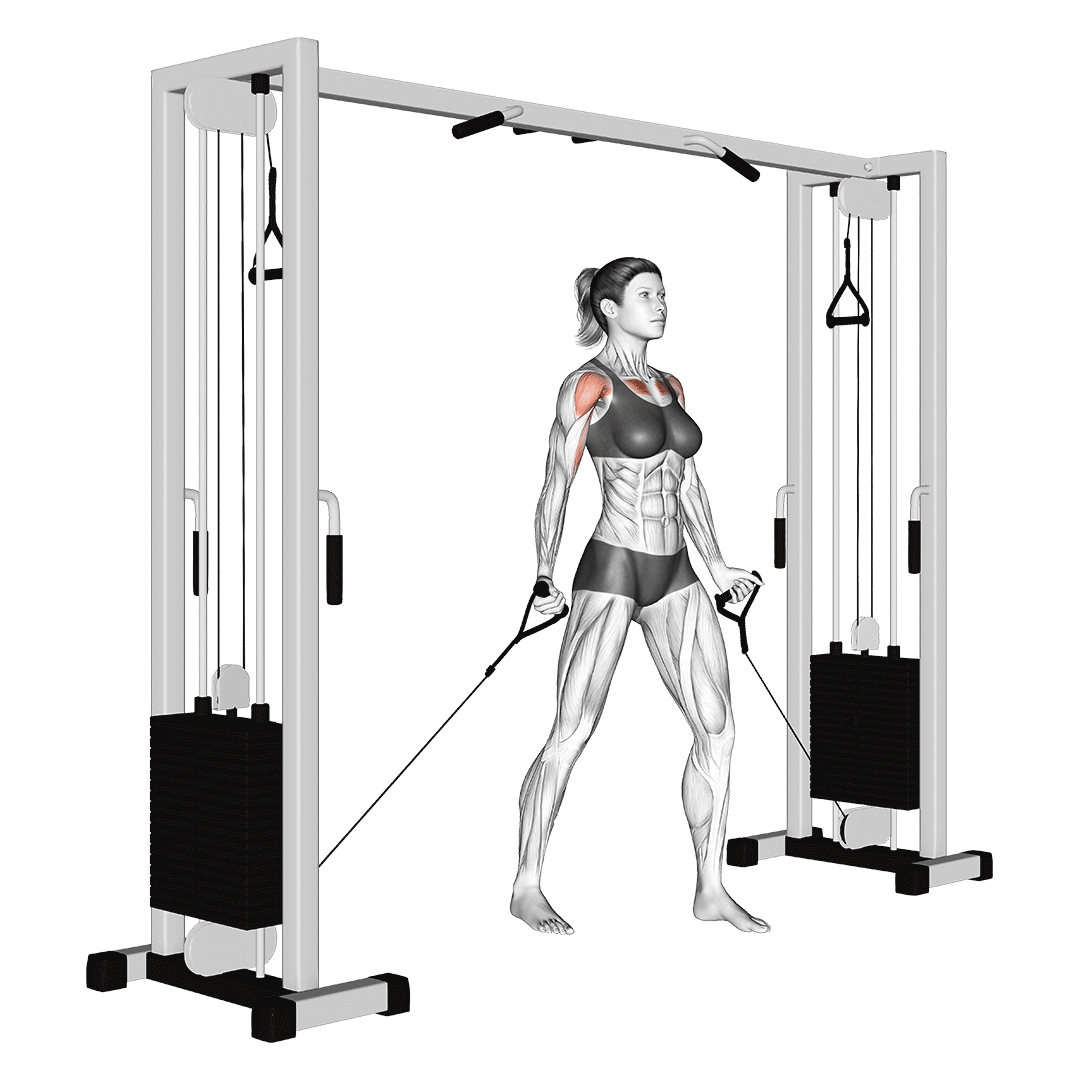
The low cable fly is primarily used for building lower pectoralis major definition, or otherwise as a combination exercise meant to target both the chest and biceps simultaneously.
Muscles Worked
Because of the lower angle of resistance, the biceps brachii will be recruited to a greater degree than with other cable fly variations.
Of course, this is in addition to a greater emphasis on the lower pectoralis major, and with the anterior deltoids playing a minor role.
Benefits as a Cable Fly Variation
As mentioned previously, the low cable fly is excellent for building lower chest mass and definition - that, and greater recruitment of the biceps as a secondary benefit.
Apart from its muscle-building capabilities, the low cable fly is also occasionally used by lifters who have trouble consciously engaging their pectoral muscles. Those with difficulty voluntarily moving their pecs can use the low cable fly as a method of “teaching” proper recruitment of the muscle.
If using the low cable fly for the latter variation, we advise keeping the arms straight as the exercise is performed, rather than bending the elbow for biceps recruitment.
How-to:
To perform a repetition of the low cable fly, the lifter will set the pulley as low as possible, gripping the handles in a neutral grip orientation and stepping forwards so that the cables trail behind the body.
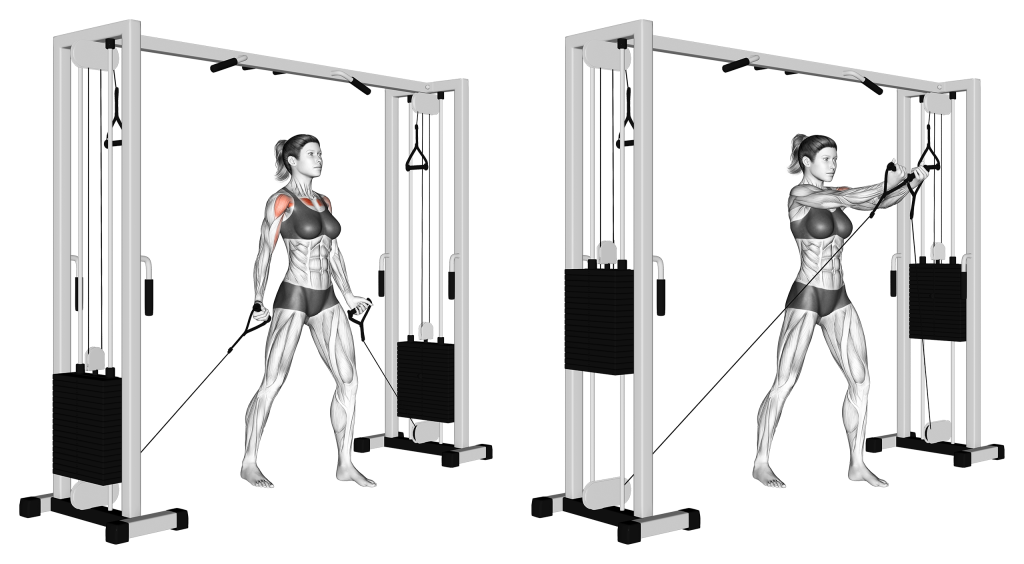
Balancing their stance, the lifter will then draw their hands parallel to the sides of their legs, allowing the arms to splay outwards with a small bend in the elbows.
With the arms positioned like so, they will then squeeze their pectoral muscles and draw their hands together, keeping the elbows bent at the same angle throughout the repetition.
Once the hands are next to one another, the lifter will allow the resistance to slowly draw their arms back to the original position.
This completes the repetition.
4. The Cable Crossover
The cable crossover is a more intense variation of the conventional cable fly, involving the lifter gripping the handles in a pronated orientation and crossing one wrist over the other at the apex of the movement.
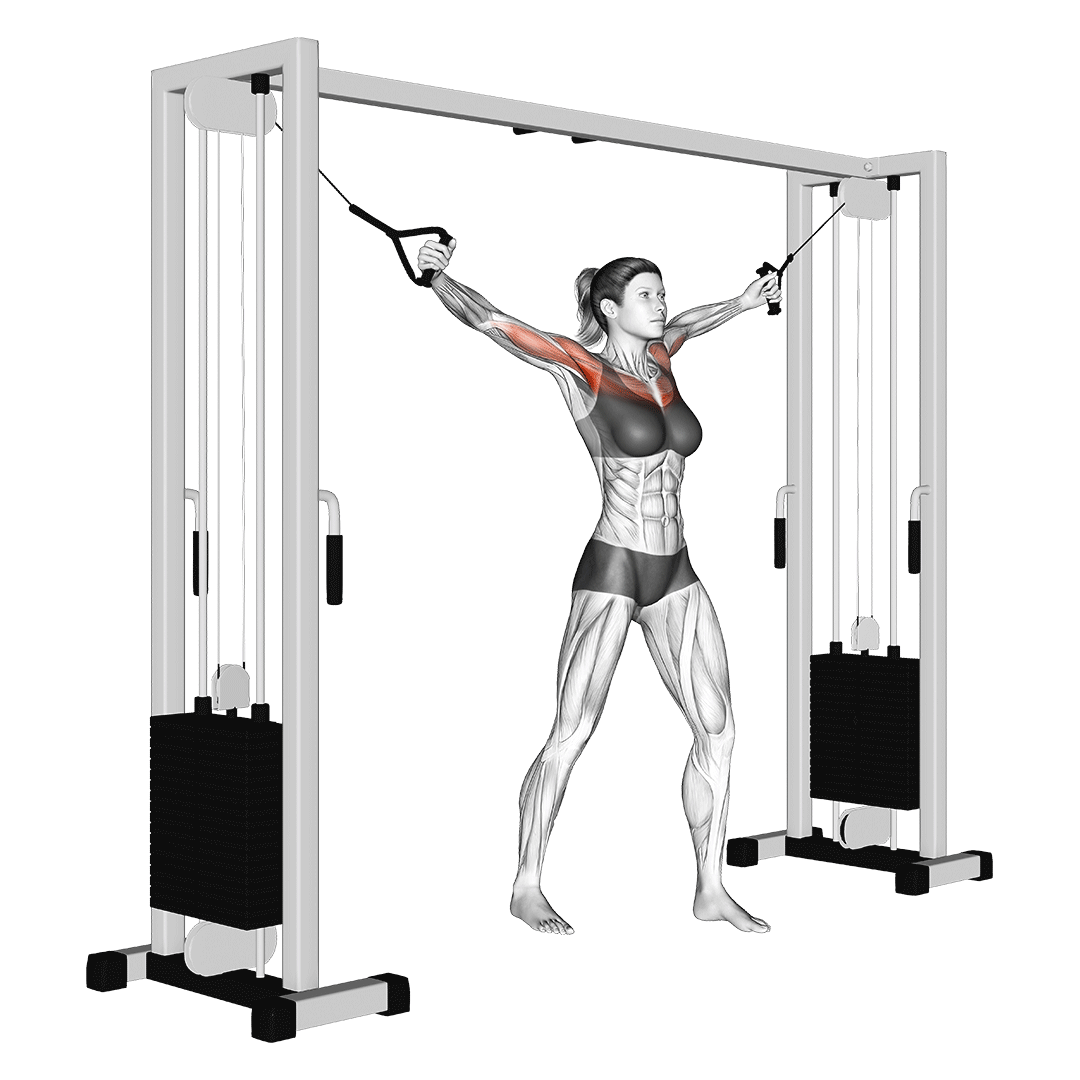
Contrary to what many believe, the cable crossover is not the same exercise as the conventional cable fly. As its name implies, the cable crossover quite literally crosses one hand over the other. In addition, the use of a pronated grip recruits the triceps brachii, rather than the biceps.
Regardless, the set-up between the two exercises is much the same and will require the same equipment and programming.
Muscles Worked
The cable crossover targets the entirety of the pectoral muscle group in equal measure. Additionally, the triceps brachii and the anterior deltoid head will also be worked.
Benefits as a Cable Fly Variation
The cable crossover is ideal for maximizing recruitment of the chest, as it works the pectoral muscles through a full range of motion that conventional cable flys cannot achieve.
So long as the lifter remembers to switch which arm crosses over the other, the exercise can effectively act as a substitute to most other cable fly variations.
How-to:
To perform a repetition of the cable crossover, the lifter will stand in the center of the cable machine, gripping both handles with their upper arms parallel to the floor. The pulleys should be approximately shoulder-height, as is the case with conventional cable flys.
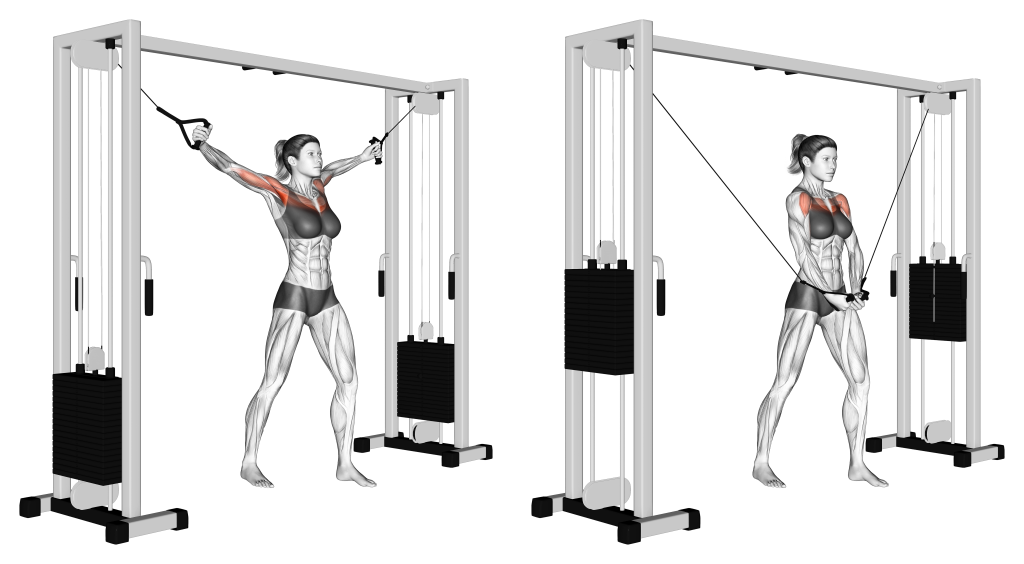
In addition, the forearms should be oriented so that the palms are facing downwards - or in what is otherwise known as an overhand grip.
Once in a stable stance, the lifter will then press their arms forwards while simultaneously drawing their hands towards one another. As they come close to touching, the lifter will cross one hand over the other, following through with the pressing motion until the arms are fully extended.
From this point, the lifter will allow the resistance of the cable to slowly pull their arms back apart - with which the repetition will be completed.
Remember to switch sides between sets or repetitions.
5. The Pronated Cable Fly
The pronated cable fly is exactly as its named; a conventional cable fly performed with the wrists oriented in a pronated or palms-down grip. This effectively eliminates usage of the biceps brachii, instead switching to the triceps as a supporting muscle group.
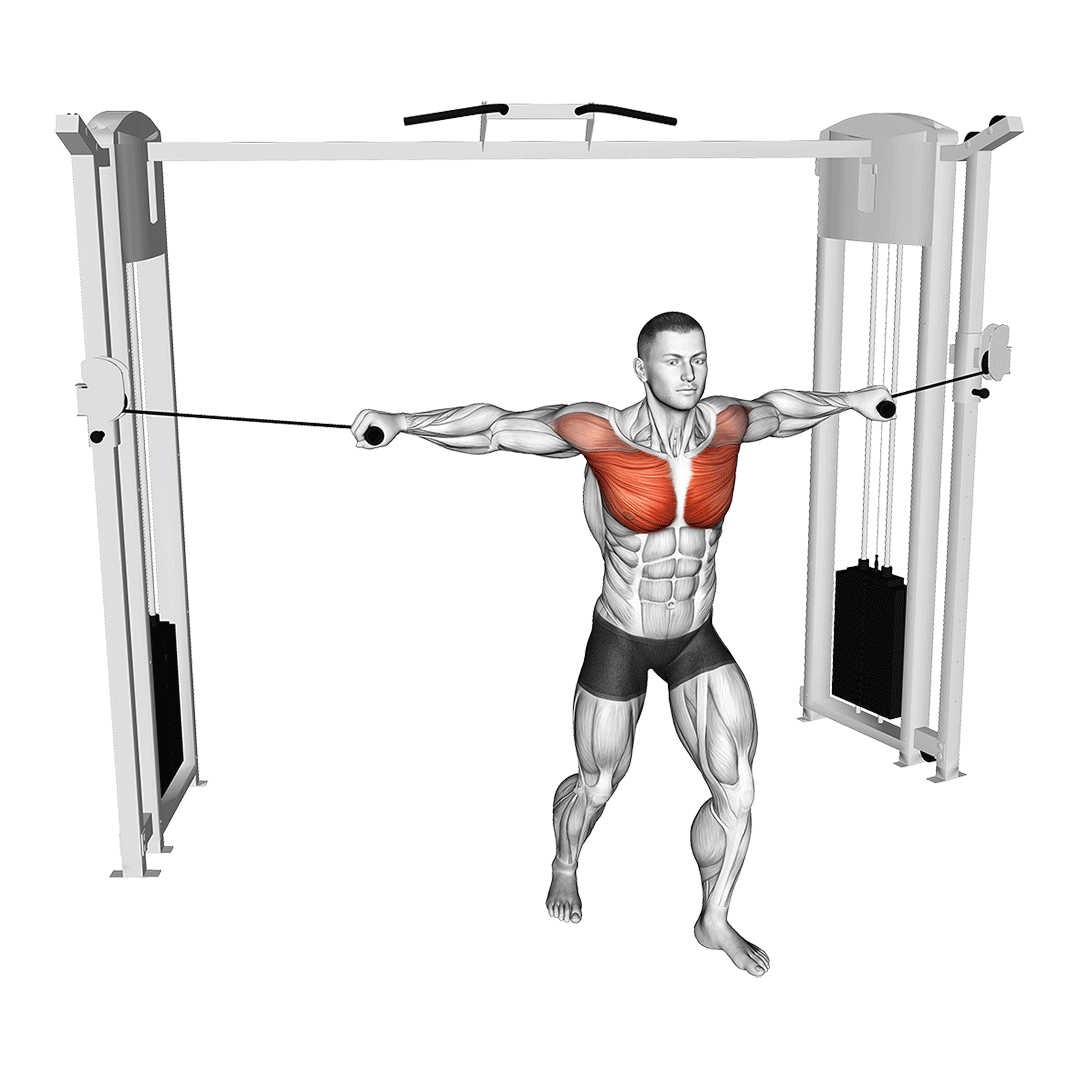
In all other aspects, the pronated cable fly is exactly the same as its conventional grip counterpart.
Muscles Worked
Pronated cable flys target the entirety of the chest alongside the anterior deltoid heads and the triceps brachii muscles.
Benefits as a Cable Fly Variation
Lifters with a history of elbow, bicep or forearm issues may experience some discomfort when performing conventional cable flys due to the neutral grip and angle of resistance.
While switching to a pronated grip is no substitute for medical attention, it can help reduce residual discomfort without calling for an alternative exercise.
In addition, lifters that wish to avoid training their biceps and instead include their triceps (as is normal with push day workouts) will find the pronated variation far easier to program.
How-to:
A pronated cable fly is performed in much the same manner as a conventional cable fly. This means shoulder-height pulleys, D handles and the lifter in the center of the machine. The sole difference is that the palms face downwards, knuckles forwards.
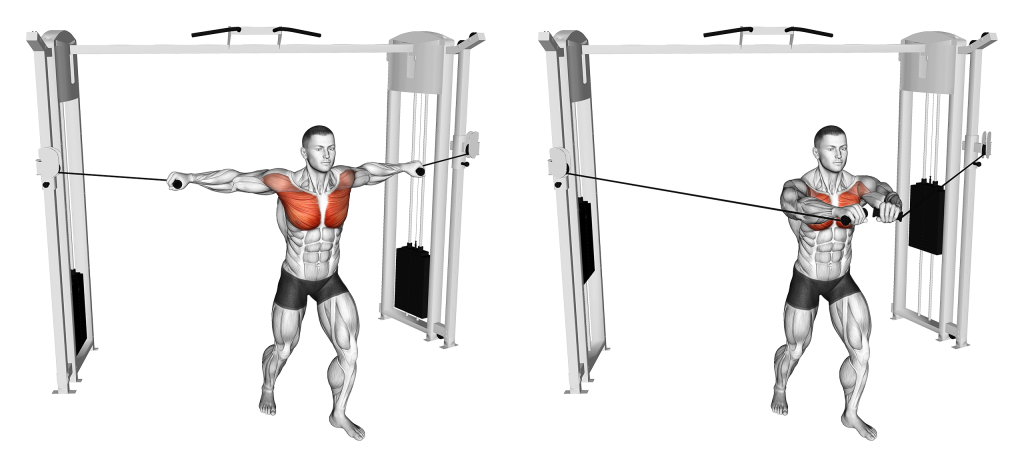
Gripping the handles in a pronated grip and spreading the arms until the upper arms are parallel to the floor, the lifter will then draw their hands together, keeping a slight bend in the elbow as they do so.
To complete the repetition, they will then allow their hands to be drawn back to the starting position in a slow and controlled manner.
6. The Decline Bench Cable Fly
The decline cable fly is a conventional cable fly performed with the addition of a decline bench, orienting the lifter’s torso at a downwards angle and having them perform the exercise while supine.
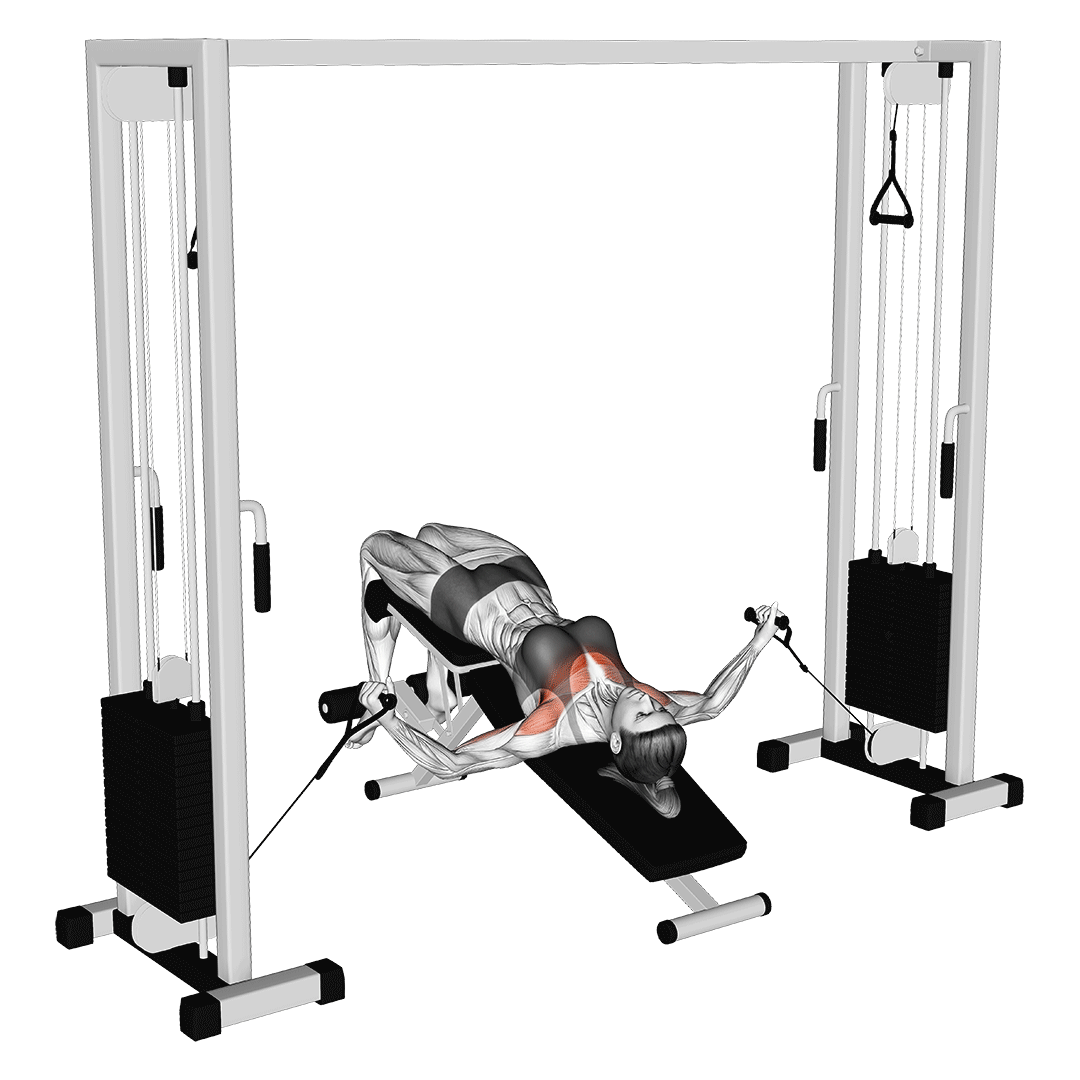
Orienting the body downwards in this manner creates an exercise more reminiscent of a dumbbell chest fly, rather than a cable fly - in addition to better targeting the lower section of the chest.
This decline cable fly is distinct from the decline angle cable fly, which is performed standing and is also called the “high to low” cable fly.
Muscles Worked
Decline cable flyes emphasize the lower section of the pectoralis major, but will nonetheless also target the anterior deltoid head.
Benefits as a Cable Fly Variation
Apart from also being excellent for building lower chest mass and definition, the decline cable fly can also act as an indirect alternative to the conventional dumbbell fly. This is due to their similarity in movement pattern and muscular recruitment, despite the somewhat different angle of resistance.
How-to:
To perform a repetition of the decline cable fly, the lifter will first position a decline bench within the cable machine, lying atop it with their legs hooked into the pads. The cable pulleys should be set as low as possible, each hand gripping a handle in a neutral orientation.
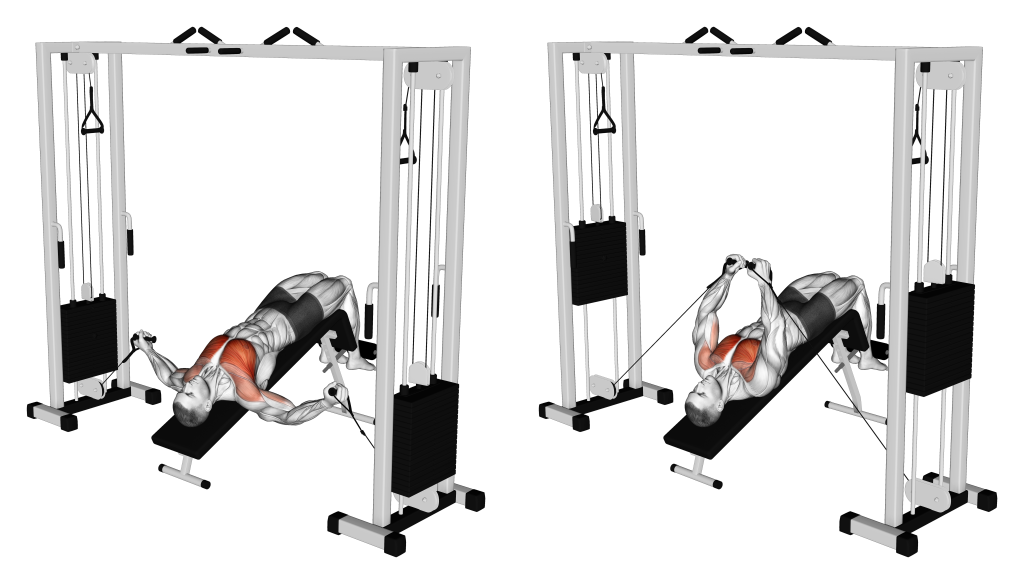
Beginning the repetition with the upper arms parallel to the shoulders, the lifter will proceed to draw their hands together over their chest as they keep a slight bend in the elbows.
Once the hands are immediately over the torso, the lifter will pause for a moment before slowly returning their arms back out to the sides - thereby completing the repetition.
7. The Incline Bench Cable Fly
Just as the decline cable fly is performed with the use of a decline bench, the incline cable fly is performed with the use of an incline bench. This creates greater emphasis on the upper section of the pectoralis major, as well as the anterior deltoids.

Once again, the incline bench cable fly is distinct from the incline cable fly. The latter is performed standing and features a different movement pattern to the incline bench variation.
Muscles Worked
The incline bench cable fly primarily targets the upper chest and anterior deltoids, with the short head of the biceps working in a stabilizing role.
Benefits as a Cable Fly Variation
Much like the high cable fly, the incline cable fly is excellent for building mass and definition in the upper section of the chest.
However, unlike the former exercise, the incline cable fly features a more horizontal angle of resistance and can be performed in a supine position.
How-to:
To perform a repetition of the incline cable fly, the lifter will first position an incline bench within the center of the cable machine, keeping the pulleys at their lowest elevation and lying atop the bench.

The handles should be gripped in both hands with the arms stretched out to the sides, aligned with the sides of the shoulders.
Now in the correct stance, the lifter will perform the cable fly as normal. To do so, they will simply draw their hands together over their chest, keeping a slight bend in the elbows as they do so.
Once the hands are nearly touching, the lifter will slowly lower their arms back out to the sides, completing the rep.
Which Cable Fly Variation Should You Pick?
Because the majority of cable fly variations work the same muscles and only change which is emphasized, picking the right one is quite simple.
Select a variation that targets the weakest section of your chest, either the upper or lower half.
Outside of a few specific training needs or use cases, the decision largely comes down to which part of the chest is underdeveloped. In most traditional weightlifters, this is likely the upper chest due to overuse of the flat bench press.
References
1. Coombes, Jeff S.., Burton, Nicola W.., Beckman, Emma M.. ESSA’s Student Manual for Exercise Prescription, Delivery and Adherence- EBook. Netherlands: Elsevier Health Sciences, 2019. ISBN: 9780729586580, 0729586588
